Did you know that building blocks such as legos may be used in so many different ways to support your child’s development? We have put together 18 super simple and extremely beneficial ideas that your kids will love.
#1 – Pair the Capital and Small Letters
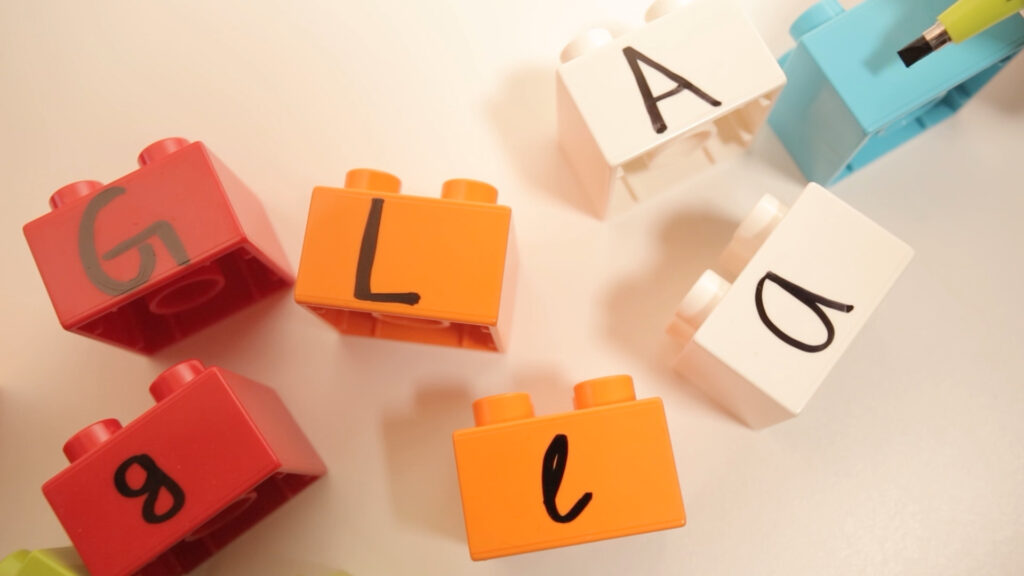
Here’s an excellent way to teach children the difference between capital and small letters.
You’ll need bricks and a whiteboard marker. Mark some of the bricks with capital letters, and some with small letters.
Then let the child match the bricks into the correct pairs.
Alternatively, you can use different colored bricks for capital and small letters.
#2 – Symmetry Game
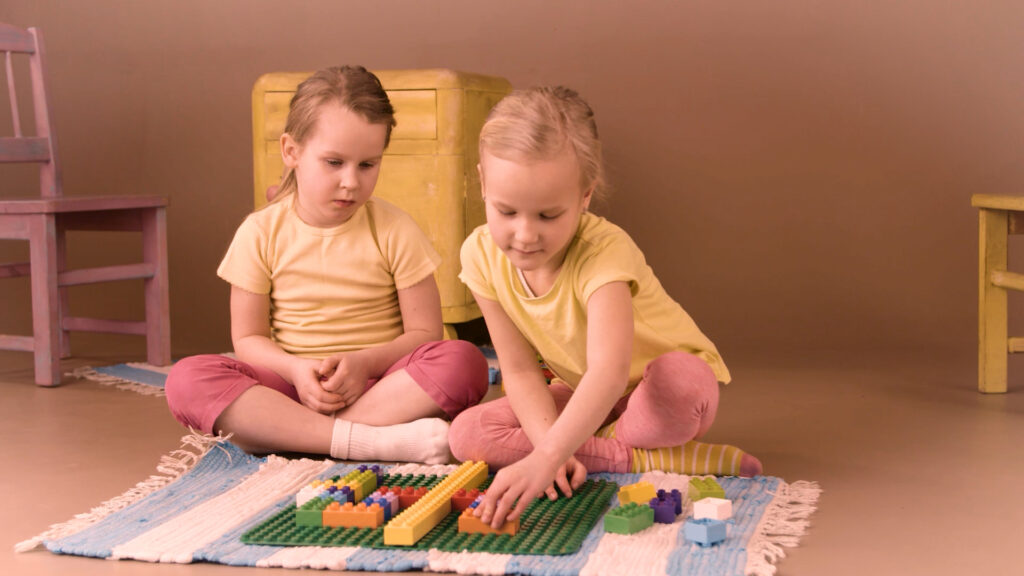
A game that develops a child’s ability to understand symmetry and reflections.
Draw a straight line on a large piece of paper and place it on the table.
Choose about 20 bricks, but make sure they all have a pair, for example, two square red bricks, two long white ones, and so on. There should be 2 equal piles.
Arrange 1 pair of bricks against the line in a random pattern. The child then has the remaining bricks; the other pair of those already arranged.
They must attempt to arrange these against the other side of the line so there’s a perfect reflection of the pattern they see.
When they are happy with what they have done, you can use a mirror to check. Did they get it right? Or do some of the bricks need to change?
You can also build larger patterns for them to mirror, to make the game even more challenging.
#3 – Counting Game
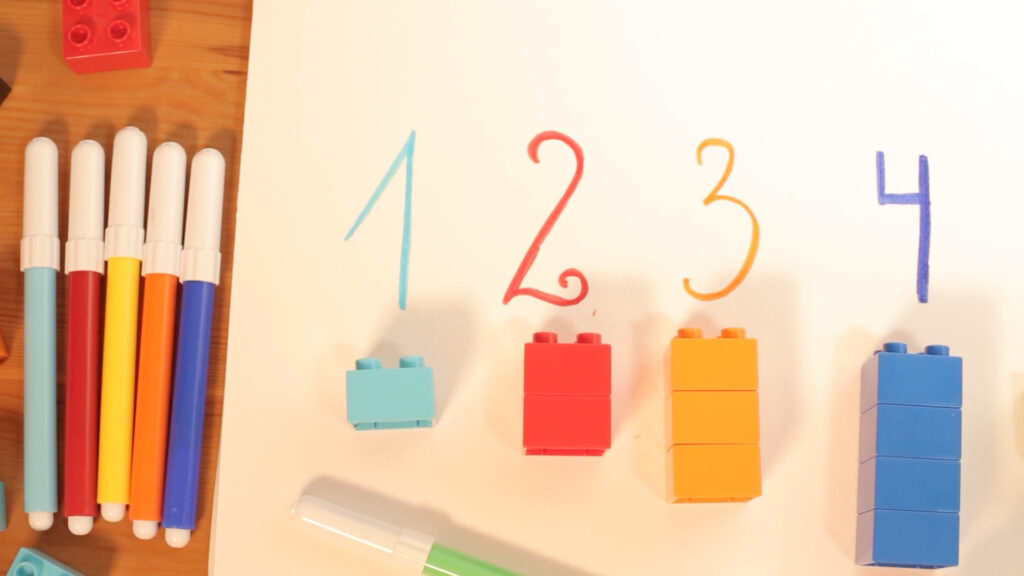
Learning to count is a step toward understanding what numbers actually mean.
How do you teach kids to count?
Write a number down on a piece of paper. Count the appropriate number of building blocks next to that number. You can make associations through different colors.
Count out loud with your child.
Now isn’t that fun?
#4 – Construction Memory Game
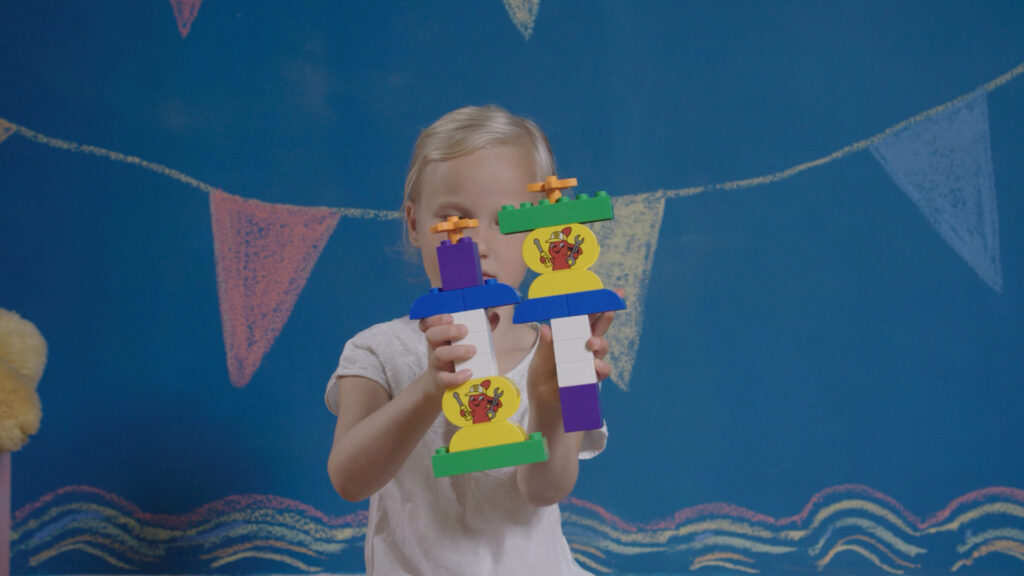
This is a really nice way to introduce a memory game using bricks.
Place 10-15 bricks on a tabletop; preferably in different shapes, colors, and sizes.
Build a small construction with some of the bricks and get the child to study it for as long as they need.
Get them to close their eyes and you dismantle the construction, putting the bricks back in a pile on the table. The child now has to recreate the construction from memory.
This will develop their memory skills as well as give them a sense of accomplishment when they see they’ve successfully recreated your creation.
#5 – Hidden Memory Game
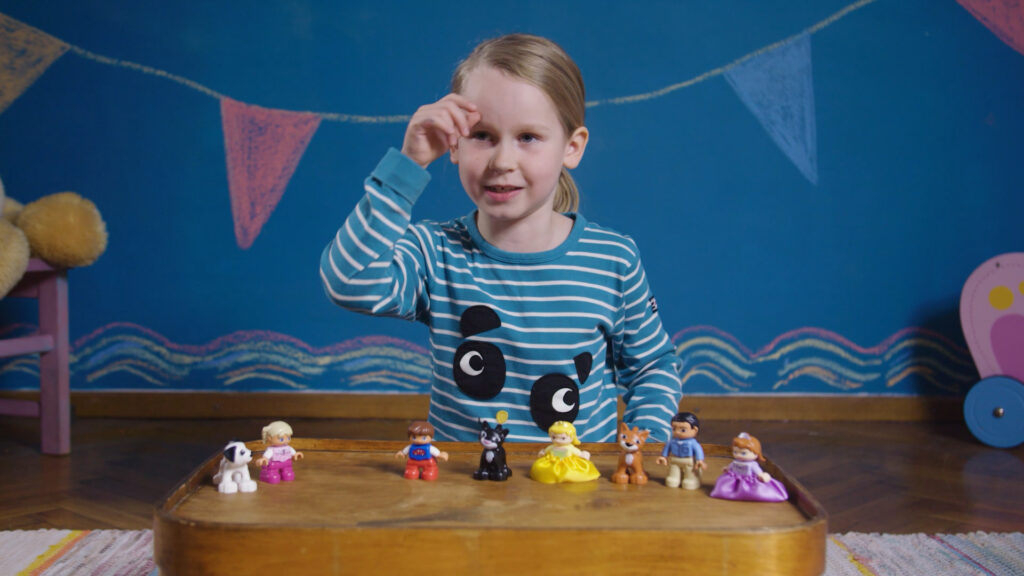
Choose a selection of 20 bricks; in different colors, shapes, and sizes.
Place them on the table in front of your child. Let the child study the bricks and tell them that you’re going to take some away.
Take one brick away. The child must then try to work out which bricks you’ve taken away. Get the child to describe the bricks that they believe are gone.
You can then reveal the ones you did take; they always find this a bit fun.
#6 – Compare Numbers

You can use bricks to teach this in an interesting and visual way.
You’ll need to make an ‘equals’ sign, a ‘less than’, and a ‘greater than’ sign.
But make sure your child knows which is which!
The open end shows the larger number and the closed endpoints to the smaller number.
Count the bricks in the two towers and compare them, is one tower greater than the other?
Is the second one smaller? Or are they equal?
#7 – Plasticine Brick Puzzle
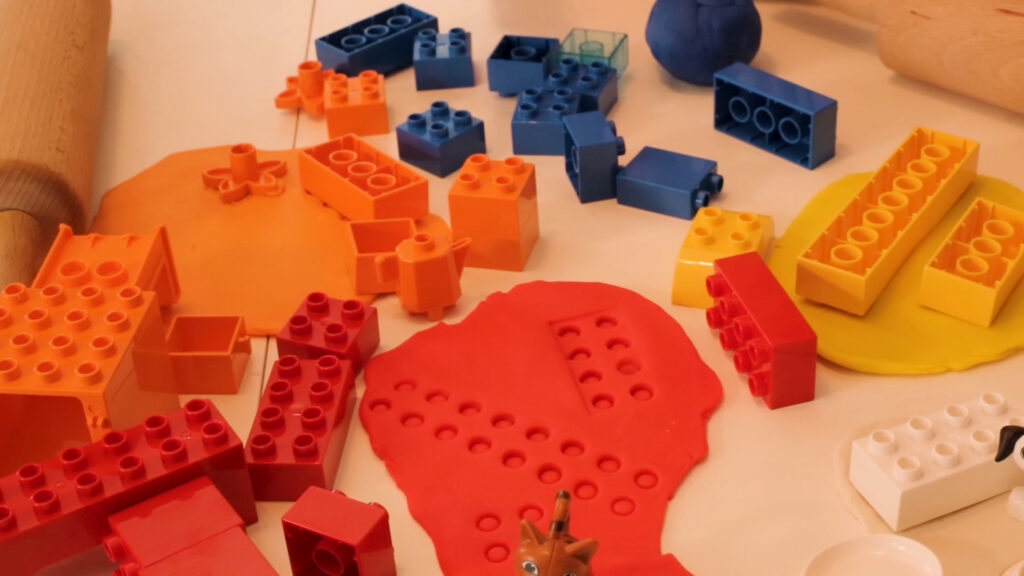
You’ll need plasticine and bricks of different shapes and sizes.
Lay the plasticine on the table, then press on it with the bricks to make impressions. Let the game begin!
The idea is that the child places the bricks on the correct impressions.
It’s an educational puzzle game that’s different every time. It’s an excellent game for developing a sense of space, hand-eye coordination, and motor skills.
Depending on your child’s skills, the area of plasticine can be made bigger, or smaller.
#8 – Building Pattern Towers
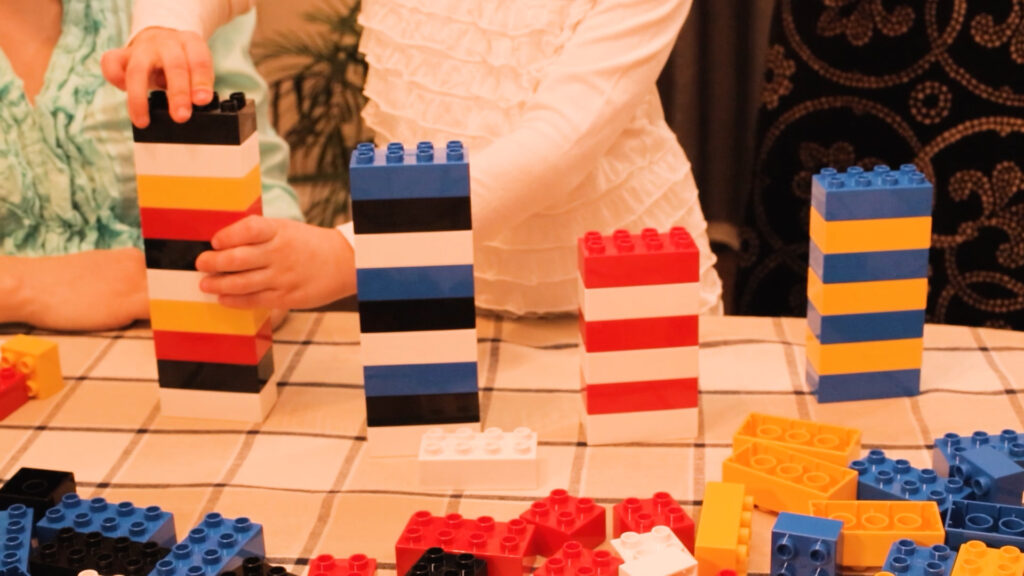
If you want to develop your child’s alertness and observational skills, then this is the game for you!
Choose enough bricks to build a good-sized pattern tower. Start the pattern and let your child continue it.
It’s believed that understanding patterns is one of the most important mental skills, and learning this skill early is the key to future intelligence.
#9 – Color Sorter Game
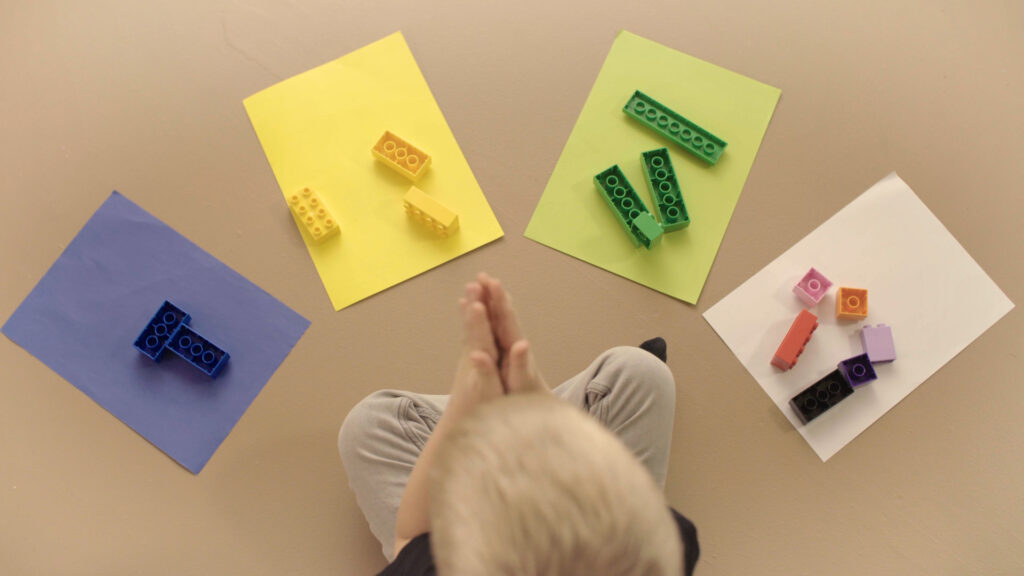
For this game, you’ll need as many colored bricks as possible.
Take four sheets of colored A4 paper, a blue one, a yellow one, a green one, and one white paper for all the other colors.
Empty the bag or box of assorted bricks in front of the child and let them place the bricks on the corresponding sheets of paper.
Tell them to put colors that don’t match onto the white paper. When the bricks are sorted, ask your child to suggest what to do with the unsorted bricks.
Encourage them to sort them into more colors, or maybe another way?
This game helps with establishing names of colors, as well as organizational skills.
#10 – Barrier Game

This game is great for developing verbal skills, and it’s well-suited for toddlers. It’s really interesting and can be lots of fun!
Both players start with the same set of bricks. Make a barrier.
One player then builds something interesting and gives verbal instructions to the other player. The other player can’t see what’s being described.
When the other player has built their construction, take away the barrier, and see how they got on.
#11- Connect 4
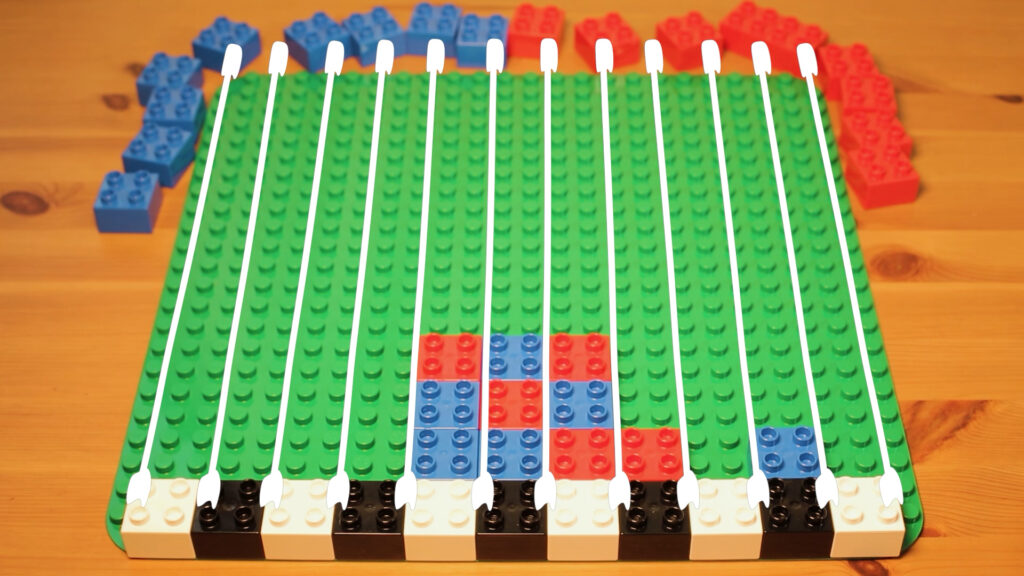
Have you ever played this classic board game using building blocks?
You can do so if you build a board and mark the imaginary rows and columns as you see on the image above.
Players must alternate turns, and only one block can be placed in each turn. Whoever connects 4 diagonally, vertically, or horizontally first is the winner.
This game is fun for all ages!
#12 – Diversity Enriches

Bigger group? Need an interesting, developmental game using bricks?
This game is perfect for larger groups of children. Give each child a selection of the same types of bricks.
Make sure the children have the space to build without the others seeing their creations. Set a time, for example, 2 minutes.
When the time’s up, compare their results. You can review and discuss their creations!
You can give specific tasks, for example, ‘create an animal’.
What type of animal did they build?
You can make the game as easy or as challenging as you like, the most important thing is that they have fun!
#13- Spot the Difference

This is a great way to develop a child’s observational skills.
How they get on will depend on their age and current skill, try to start at a level that’s right for your child. Take two piles of identical bricks, then take one away and replace it with a different brick.
Now let your child try to figure out what’s different about the two piles.
The more skilled your child becomes, the harder you can make the task by adding more bricks or shapes.
This game is great for children of all ages. Remember, positive emotions can really help your child’s development.
#14 – Pig in a Poke
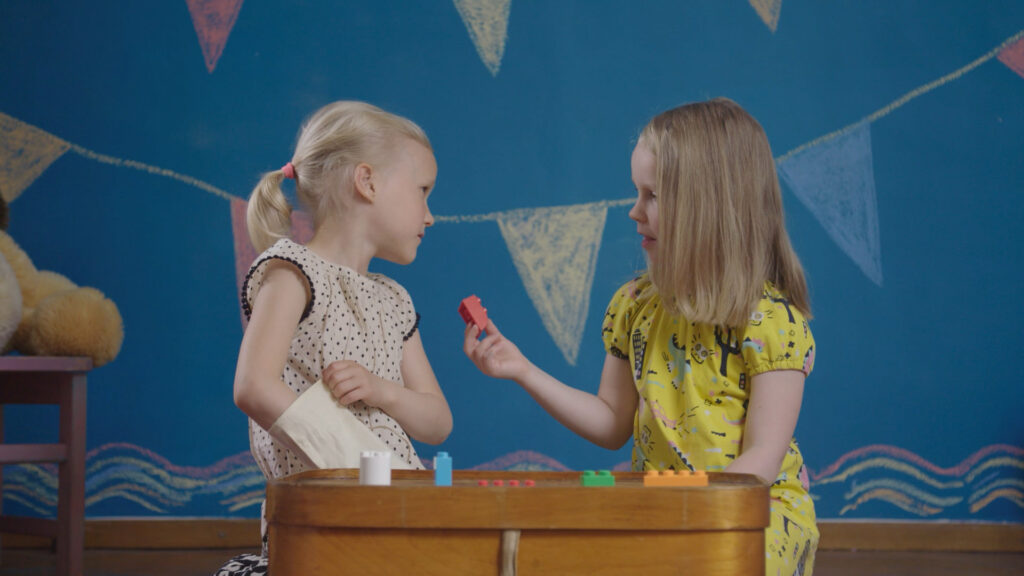
Choose a selection of different bricks and place them on the table.
Find a brick that is the same shape and color as the one on the table and put it in a non-transparent bag.
Let the child put their hand in and feel the brick.
Can they tell which brick it is? Let them feel the shape and size of the brick and ask them to explain what they can feel as they’re doing it. Can they tell the difference? Did they get it right?
This is a great game to develop a sense of touch.
You can also play the game without other bricks on the table, so it becomes more of a guessing game!
#15 – Tic Tac Toe
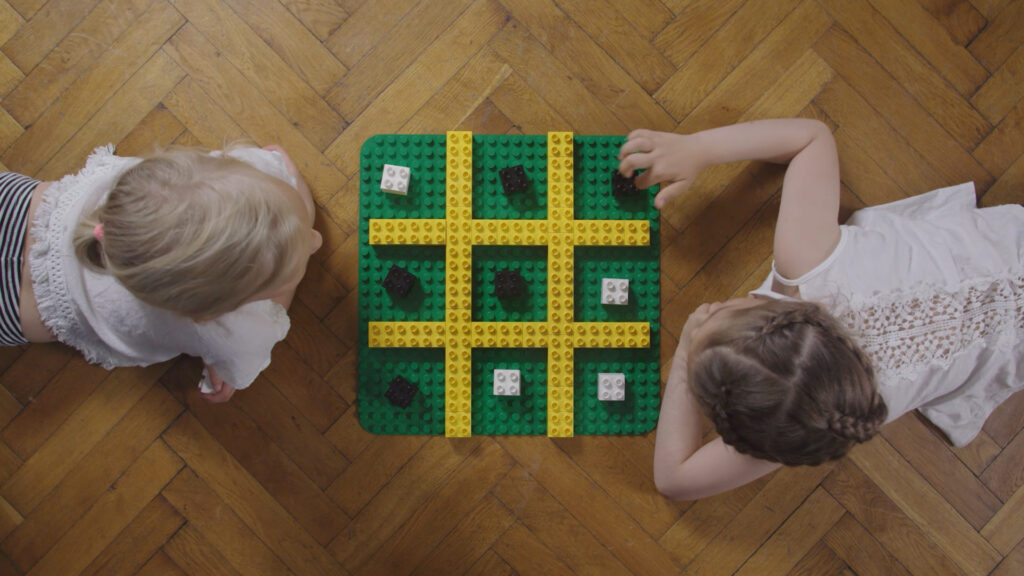
The game is played on a grid that’s 3 squares by 3 squares. So you need to build a board before you can play.
There are two players, and each player chooses a color and has 5 bricks in that colour. Take turns to make moves.
The first player puts a brick in one of the nine spaces on the board, the aim is to get a line of three, horizontally, diagonally, or vertically.
The aim of their opponent is to stop that happening or to get 3 in a row before the other player does!
This game helps kids develop strategic skills. And it also teaches teamwork as before playing they need to set up the board.
#16- Prepositions of Place
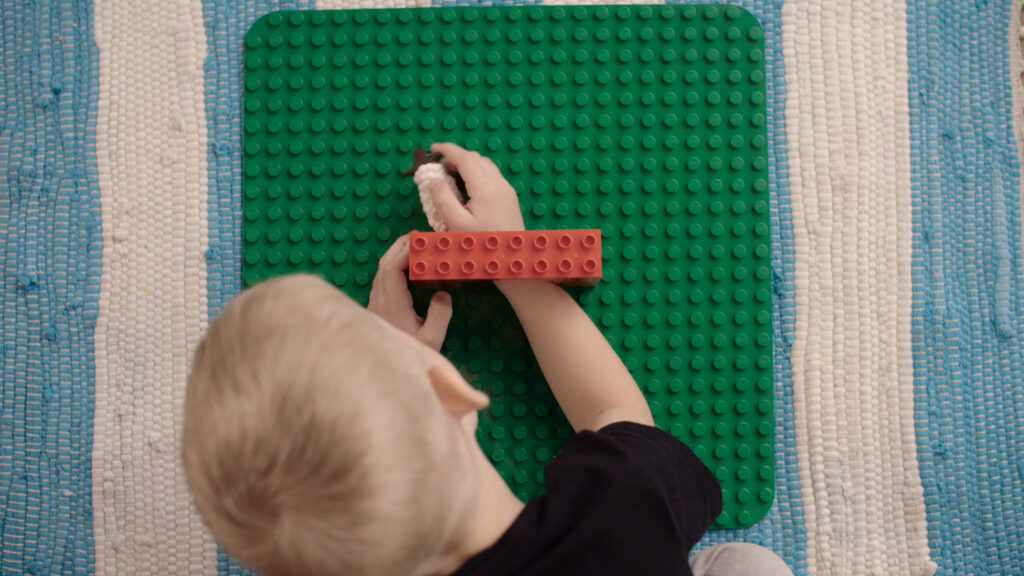
Let your child pick one brick as your static brick, then take another one as your movable one, for example here’s a lamb brick.
Then with the child sitting opposite you, place the static brick in the middle of a board. Start to place the movable brick in different places.
The child must tell you where the lamb is in relation to the static brick.
Is it on top of it? Is it under it? Is it in front of it? Or is it behind it?
This game is an effective way of developing your child’s spatial awareness, as well as his or her language skills.
This game may be also great for older kids to teach them other languages.
#17 – Guess Who?
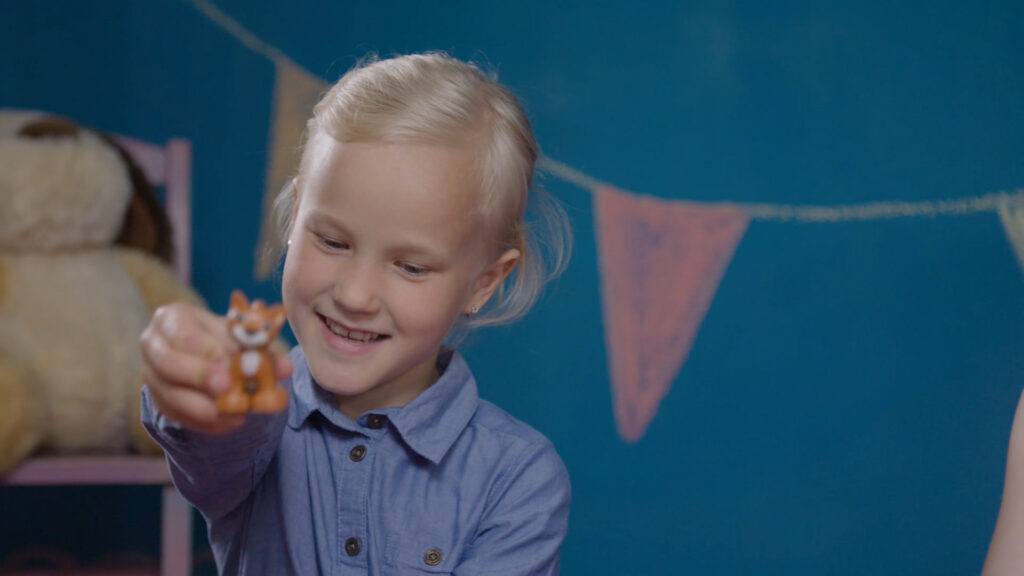
Collect all the little characters and figures. Lay them out so everyone can see them.
One player describes a character, the others have to listen and try to guess who they’re talking about. Take turns.
Try to talk about all the details of the character, the color, the size, the type, and so on. Just don’t say which one it is!
Try to think of an alternative way to describe the characters.
This game gives the child a chance to practice their verbal skills.
#18 – Acknowledge the Effort, Not the Results!
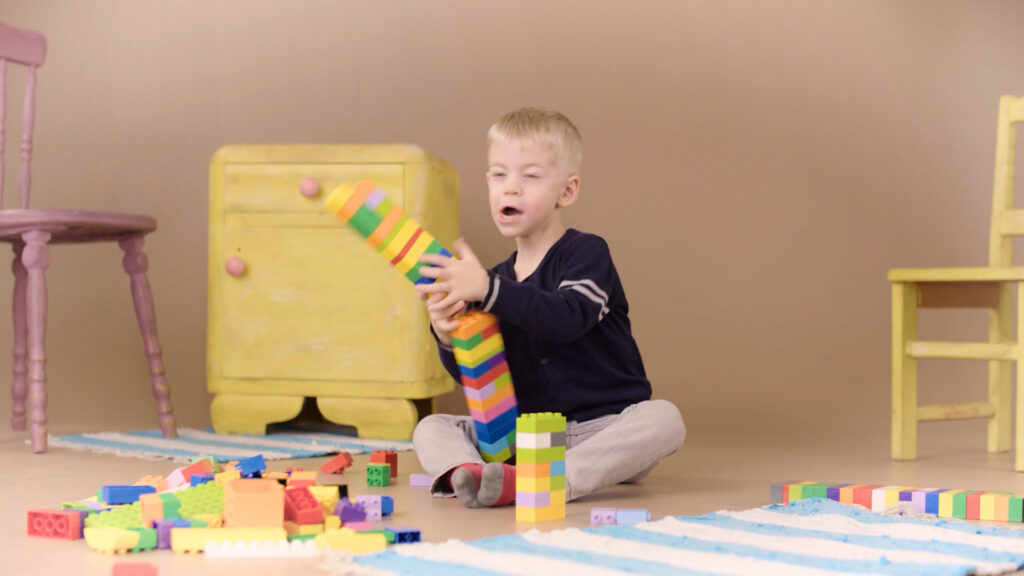
Children can play for hours, and that’s great. Whilst they play they learn and grow.
Brick games are a great way for them to learn how to solve problems and deal with challenges. The bigger and more detailed the construction, the more effort they need to put in.
Did you know that when you recognize a child’s effort, they’re happier to take on further challenges?
It’s important to recognize a child’s performance, effort, resilience, and persistence, rather than just focusing on the outcome.
If you focus on the result, the child may become afraid of failure.
Recognizing how they worked on a task makes for a strong-willed child, and helps them face problems and challenges as they go through life.
